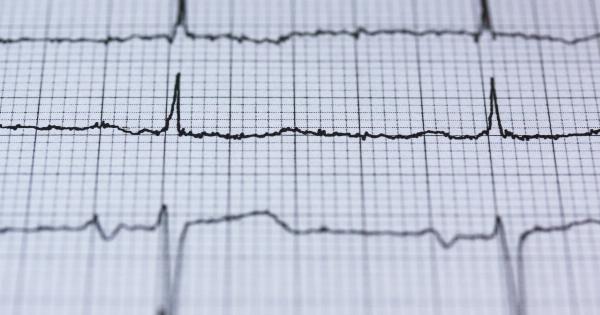Sexual arousal is a complex physiological and psychological process that involves multiple brain regions, hormones, and neurotransmitters.
While there are many similarities between male and female sexual arousal, there are also some notable differences in terms of neurobiology and behavior.
Male Sexual Arousal
Male sexual arousal is primarily driven by the release of testosterone, a hormone produced by the testes. Testosterone plays a key role in regulating sexual desire, genital sensitivity, and erectile function.
It also influences other aspects of male behavior, such as aggression, dominance, and risk-taking.
When a man becomes sexually aroused, his brain triggers the release of nitric oxide, a chemical that relaxes the smooth muscles in the penis and allows it to fill with blood. This results in an erection, which is necessary for sexual intercourse.
The release of nitric oxide is mediated by the parasympathetic nervous system, a part of the autonomic nervous system that controls involuntary bodily functions.
In addition to testosterone and the parasympathetic nervous system, male sexual arousal is also influenced by other neurotransmitters, such as dopamine, serotonin, and oxytocin.
These chemicals are involved in modulating mood, emotion, and social bonding, which can have an impact on sexual behavior and satisfaction.
Female Sexual Arousal
Female sexual arousal is a more complex process than male sexual arousal. It involves a combination of physical and psychological factors and is less dependent on hormonal fluctuations than male sexual arousal.
One of the key factors in female sexual arousal is the release of dopamine, a neurotransmitter that plays a role in reward and motivation.
Dopamine is released in response to sexual stimuli, such as touch, visual or auditory cues, and fantasies, and can enhance sexual pleasure and desire.
Another important neurotransmitter in female sexual arousal is oxytocin, which is involved in social bonding and emotional attachment. Oxytocin is released during sexual activity and can increase feelings of intimacy and pleasure.
It can also facilitate orgasm, a key component of sexual satisfaction for many women.
Other factors that contribute to female sexual arousal include estrogen, the primary female hormone, which can increase vaginal lubrication and blood flow to the genitals, as well as psychological factors such as body image, self-esteem, and relationship dynamics.
Differences between Male and Female Sexual Arousal
While there are many similarities between male and female sexual arousal, there are also some key differences that reflect differences in neurobiology and behavior.
One of the most notable differences is the role of testosterone. While testosterone plays a crucial role in male sexual arousal, it has a more limited impact on female sexual arousal.
This is due in part to the fact that women have much lower levels of testosterone than men, as well as the fact that female sexual desire is influenced by a wider range of factors.
Another difference is the importance of intimacy and emotional connection. While men often focus on physical pleasure and visual cues, women are more likely to be aroused by touch, communication, and emotional connection.
For women, sexual desire is often intertwined with feelings of love, trust, and intimacy, while for men it is more focused on physical attraction and sexual novelty.
Finally, there are differences in the way that male and female orgasms are experienced.
While male orgasms are typically characterized by a rapid build-up of tension that culminates in a release of semen, female orgasms are more varied and can involve a range of sensations, from intense pleasure and muscle contractions to emotional release and spiritual transcendence.
Implications for Sexual Health and Wellness
Understanding the neuroscience of male and female sexual arousal can have important implications for sexual health and wellness.
It can help individuals and couples better understand their own sexual desires, as well as those of their partners, and can provide insights into how to enhance sexual pleasure, satisfaction, and intimacy.
For example, men may benefit from focusing on emotional connection and intimacy as well as physical pleasure, while women may benefit from exploring a wider range of sexual fantasies and experiences that incorporate emotional and psychological factors.
Additionally, individuals and couples can benefit from learning about the impact of hormones, neurotransmitters, and other physiological factors on sexual function and desire.
This can help them make informed decisions about sexual health and wellness, such as whether to use contraception, seek medical treatment for sexual dysfunction, or explore alternative approaches to sexual enhancement.
Conclusion
Sexual arousal is a complex process that involves multiple brain regions, hormones, and neurotransmitters.
While there are many similarities between male and female sexual arousal, there are also some notable differences in terms of neurobiology and behavior. Understanding these differences can help individuals and couples achieve greater sexual pleasure, satisfaction, and intimacy, and can promote optimal sexual health and wellness.





























